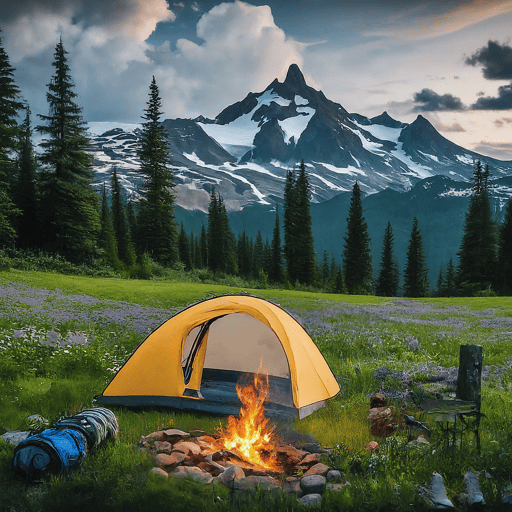Dispersed camping, the practice of camping outside of designated campgrounds, offers a unique and immersive outdoor experience. However, it also presents significant challenges, particularly regarding water management. Unlike established campgrounds with readily available water sources, dispersed camping requires careful planning and resourcefulness to ensure a safe and enjoyable trip.
Planning for Water Needs
Before embarking on your dispersed camping adventure, it’s crucial to calculate your daily water requirements. On average, an adult needs about 2-3 liters of water daily for drinking alone. However, this can vary significantly based on factors such as climate, physical activity, and trip duration. Water needs can easily double or triple in hot weather or during strenuous activities.
When planning your trip, research the area thoroughly to identify potential water sources. Topographic maps, satellite imagery, and local hiking guides can provide valuable information about nearby rivers, lakes, and springs. Remember, the availability and reliability of these sources can change seasonally, so always have a backup plan.
Water Sourcing Methods
Natural water sources are often the primary option for dispersed campers. Rivers, lakes, and springs can provide ample water but require proper treatment before consumption. When relying on these sources, always collect water upstream from your campsite and away from any potential contamination sources.
Rainwater collection can be an effective supplementary method in areas with frequent rainfall. A simple tarp or rainfly can funnel rainwater into containers. In winter, melting snow and ice can provide a reliable water source, though it requires more fuel and processing time.
Water Purification Techniques
Regardless of the source, all water collected in the backcountry should be treated before consumption. There are several effective methods for purifying water:
- Filtration systems: Portable and gravity filters are popular among campers for their ease of use and effectiveness against most pathogens.
- Chemical treatments: Iodine or chlorine tablets are lightweight and effective, though they may affect the taste of water.
- UV purification devices: These are quick and effective against most microorganisms but require batteries or charging.
- Boiling: This is the most reliable method for purifying water, as it kills all pathogens. However, it requires fuel and time.
For a comprehensive overview of essential gear for dispersed camping, including water purification tools, check out this ultimate checklist for dispersed camping gear.
Conservation Strategies
Water conservation is crucial during dispersed camping. Minimize cooking water usage by choosing meals that require less water to prepare and clean up. Consider using biodegradable soap and a small scrubber for dishes, and wash them away from water sources to prevent contamination.
For personal hygiene, use waterless hand sanitizers and biodegradable wet wipes to reduce water consumption. When bathing is necessary, use a solar shower or a small amount of heated water away from natural water sources.
Technology and Tools for Water Management
Modern technology can greatly assist in water management during dispersed camping. Water locator apps and websites can help you find and navigate to known water sources. Some GPS devices allow you to mark and share water source locations with other users.
Portable water quality testers can provide peace of mind when using unfamiliar water sources. These devices can detect common contaminants and help you make informed decisions about water treatment.
Seasonal Considerations
Water management strategies need to adapt to seasonal changes. In winter, insulate your water containers to prevent freezing and be prepared to melt snow for water. During summer in arid environments, focus on finding reliable water sources and carrying extra water capacity.
Spring can bring high water levels and increased contamination due to runoff, so be extra cautious with water treatment during this time.
Advanced Water Sourcing Techniques
For those venturing into more remote areas, advanced navigation skills for dispersed camping can be crucial for locating water sources. Reading topographic maps and understanding geological formations can help you predict where water might be found, even in seemingly dry areas.
In emergencies, knowledge of how to extract water from plants or create solar stills can be lifesaving. However, these methods should be considered a last resort due to their low yield and time-consuming nature.
Conclusion
Mastering water management is essential for a successful dispersed camping experience. By combining thorough planning, effective sourcing methods, proper purification techniques, and conservation strategies, you can ensure a safe and enjoyable outdoor adventure. Adaptability is key—conditions can change rapidly in the backcountry, so always be prepared to adjust your water management approach as needed.
As you gain experience, share your water-sourcing strategies with fellow campers and contribute to the growing community of responsible dispersed camping enthusiasts. Your insights could be invaluable to others embarking on their own wilderness adventures.

Leave a Reply